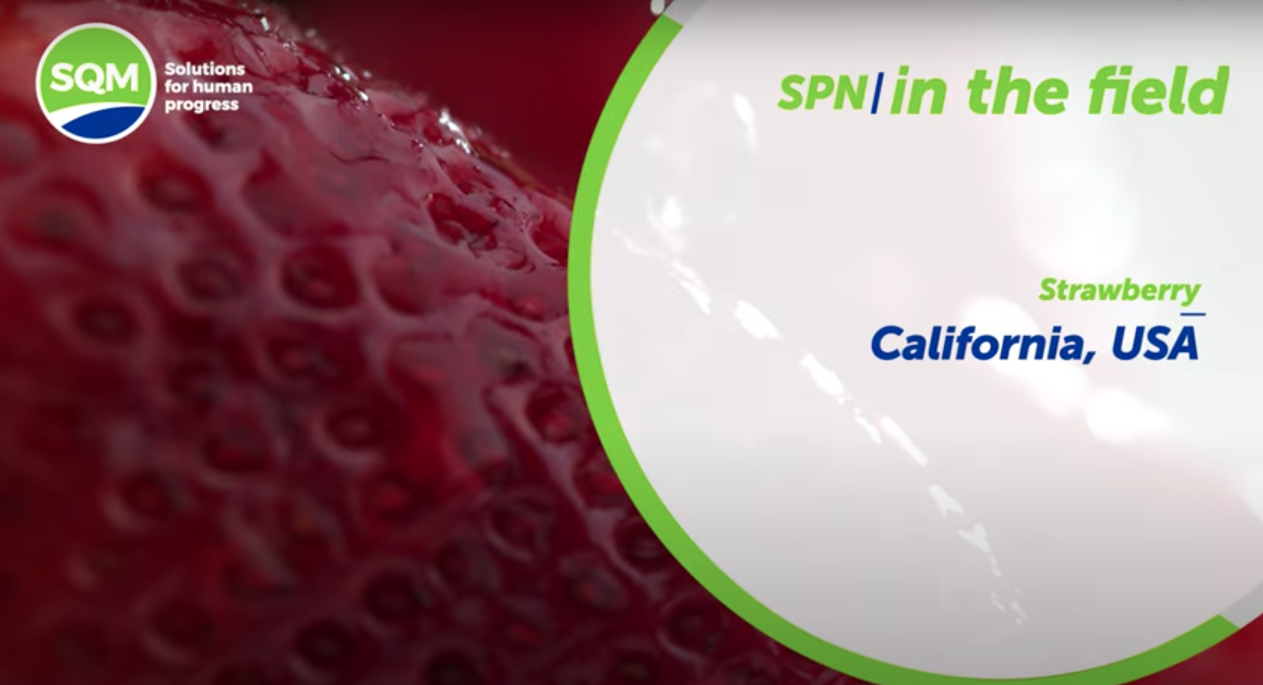The effect of four root temperatures and five NO3-/NH4+ mole ratios, at a constant total N in the fertigation was studied in strawberries (Table 1). The solution was fertigated in 1-L pots using continuous flow technique. Total N uptake, uptake of NO3- or NH4+, plant development, and the amount of mineral ions in the leaves and roots were measured.
Maximal N uptake in the plant was dependent on temperature and growth phase, with highest uptake during a phase of vegetative growth at 25°C. In almost all cases the N uptake was higher when both N sources were present in the nutrient solution. During flowering and fruit development, the plants showed preference for uptake of NO3-. When harvest was finished and the plants exhibited vegetative growth a preference for the uptake of NH4+ over NO3- was observed. Possibly the variation in carbohydrate content of various plant organs, or changes in the internal metabolism associated with vegetative or reproductive development are responsible for this shift in NO3- preference.
A higher dry matter content was found in plants fed exclusively with NO3-, compared to NH4+ fed plants at the extreme root temperature of 10°C and 32°C. In contrast, at normal temperatures of 17°C and 25°C, plants given nutrient solution with a ratio NO3-:NH4+ of maximally 1:1, obtained a higher dry weight of leaves compared to NO3-only (Table 1).
At low root temperatures, NH4+ fed plants did not show root damage, whereas at the highest root temperature (32°C), roots of these plants disintegrated. The explanation for this is most probably the fact that NH4+ metabolism occurs exclusively in the roots and requires carbohydrates inside the root cells, where there is an intensive competition with respiration for sugar reserves. At higher temperatures the need for sugar in other plant parts is also increased, enhancing this competition.
The effect of N form on the cation concentration was found to be significant in most cases. In NO3- fed plants, K+, Ca2+ and Mg2+ concentration in the roots was higher compared to NH4+ fed plants. In the leaves Ca2+ was also higher in NO3- fed plants. The leaf-Mg2+ was unaffected by the form of nitrogen, and the effect of N form on leaf-K+varied with temperature, with higher K+ in NO3- fed plants with root temperatures lower than 17°C . Regarding the concentration of anions, an increase of NO3- concentration in the leaves was found for plants grown on either N form. Chloride and sulphur concentration were increased in NH4+ fed plants and P was decreased in NO3- fed plants.
The balance of the concentration of total mineral cations minus the concentration of total mineral anions (C-A), is nominally equivalent to the concentration of carboxylate anions. This was found to be higher in the leaves than in the roots for all temperatures and N forms. In the roots, the nominal carboxylate content of the roots decreased with higher temperatures with both N forms, and was higher in NH4+ fed plants. In contrast in the leaves of plants fed with NO3-, the leaf carboxylate content was not dependent on temperature, but was still negatively correlated in NH4+fed plants. Leaf carboxylate content in general was lower in NH4+ fed plants than in NO3- fed plants. This is explained by the reduction of NO3- in the leaves, that is linked to the production of organic acids, or to a higher consumption of carboxylates in NH4+ fed plants at higher temperatures. The authors point to the importance of calculating the ionic balance as this enables us to understand the carboxylate production in various plant organs, and to demonstrate the importance of nitrogen form on plant carboxylate metabolism and consumption as function of root temperature.
Table 1. The effect of root temperature and NO3-/NH4+ ratio on dry weight of strawberry (grams leaves/plant). Means with the same letter are not significantly different within each root temperature treatment. * plants had died due to root damage.





